|
|
Post by kings6 on Oct 7, 2020 9:49:36 GMT -5
Lee, you are going to have to sew up another vest for the patch accumulation! Congratulations on the win and thank you for the explanation on dealing with the mirage. Like many things that look confusing, when broken down into the various parts, it makes much more sense. You get tired of your field of work, you could jump into teaching as you have a gift for helping others understand complex concepts.
|
|
|
|
Post by bradshaw on Oct 7, 2020 11:28:27 GMT -5
Match #101 Black Creek Gun Club, Mechanicsville, VA IBS 100 Yard VFS __________________________________________ Krieger #3 continues to impress. And the guy perched behind that barrel was patient enough to steer it to another win.   The conditions at Black Creek were pretty good. Winds never much topped 5 to 7 mph and laid down long enough to run a couple of bulls. By target #4, the mirage came in hard. At full boil, it moved the reticle almost a ring. There’s no sure fire way to shoot through mirage. Short of using it to assess wind direction and intensity, it isn’t your friend (besides, we use wind flags for that). I’m sure most of you have experienced mirage to some extent. With low power scopes, it’s often not perceptible. But with 40x and higher, it wreaks havoc with POA. At 100 yards, we’re trying to hit a 0.0625” dot. Get cross hairs bouncing a half-inch or more in a non-repeatable pattern, and you’re guessing where to hold. Or are you? Here’s how I manage through mirage; 1) Know the gun’s POI for a given condition or two when there’s no mirage. The waves come in as the day progresses and temperature rises. Establish your zero during warm-up and find POAs (holds) for 2 or 3 conditions that seem to repeat. When the mirage enters, you’ll need to trust that zero and those hold offs 2) Don’t guess POA as the reticle bounces. Wait for the wind to pick up. This will tamp down the mirage, possibly even eliminating it for a few seconds. Set your POA immediately. The mirage will reappear as the wind subsides, but you can trust that hold. No matter how much it begins to dance again, don’t adjust the rest. 3) Wait for one of those known conditions to return. Example – my gun was dead zeroed on the dot in little to no wind. I center held when the propellers were hardly spinning. In fact, the flags would lay down every 30 – 40 seconds and stay put for 3 or 4 seconds. 4) I took advantage of points #2 and #3. Let the wind pick up, fix a center hold on the dot as the mirage was cut, and wait. When the propellers slowed or went still, I touched the trigger. 5) What happens if the wind doesn’t die down? Or worse, it picks up? In that case, the wind is your friend. If it blows enough, it’ll cut the mirage allowing for precise POAs. Just get to the known holds you’ve confirmed throughout the day for those 2 or 3 conditions. Then wait for them to appear and fire. It isn’t a perfect practice, but it beats guessing. 6) If your conditions don't return, shoot a lot of sighters. Let the gun show you what it wants to do. That applies to all situations, not just mirage and flags not setting-up to your liking. -Lee www.singleactions.com"Chasing perfection five shots at a time" ***** Clear, brilliant experience-based perception. Recommend all shooters from Champions on down read Lee’s tutorial on sharpshooting. Note extreme patience at play. PATIENCE and SPEED are twins in steering a bullet. David Bradshaw |
|
|
|
Post by Lee Martin on Oct 13, 2020 18:43:02 GMT -5
Match #102 Fairfax Rod & Gun Club, Manassas, VA IBS 100 Yard VFS _________________________________________________ It was a perfect fall day for Fairfax’s last 100 yard match of the year. Temperatures were mid-60’s and the wind never pushed harder than about 5 mph. My rifle picked-up where it left off the week prior with another win. I knew the tune was right after shooting a 3-shot ‘dot’ on the warm-up sighter and wiping out all five X’s. Like Black Creek, I was patient and found 3 holds that worked throughout: 1) When the flag tails were hanging low and the propellers barely moved, I center held on the dot 2) On mild left-to-right, I held in between the 10 ring and the dot at 10:00 3) For mild right-to-left, my POA was in between the 10 ring and the dot at 4:00 I never saw a condition that warranted a hold on the 10-ring edge or beyond. This win also gave me my 6th screamer award and third 24X. Just like the two times before, the missed X was on targets 1 or 2. As odd as this’ll sound, that isn’t all bad. Perfection was off the table early on. I aggressively shot targets 3 thru 5 and secured 5X’s on each. A personal goal is to someday get a 25X agg. Don't know if it'll ever happen, but it is satisfying to come close.  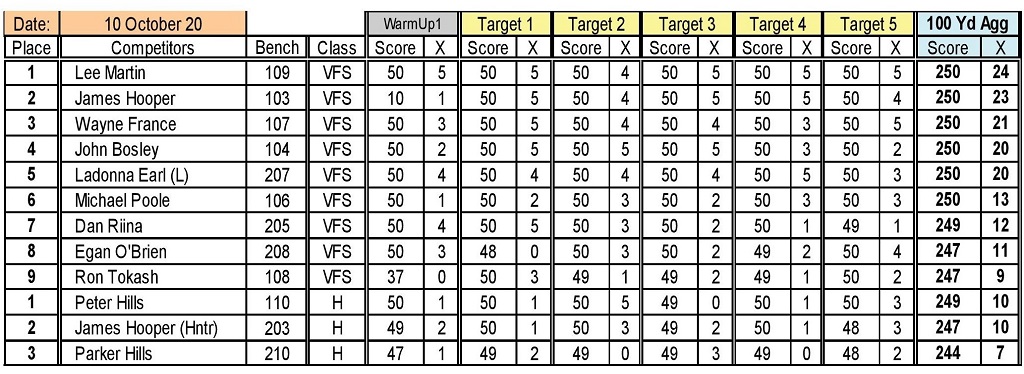 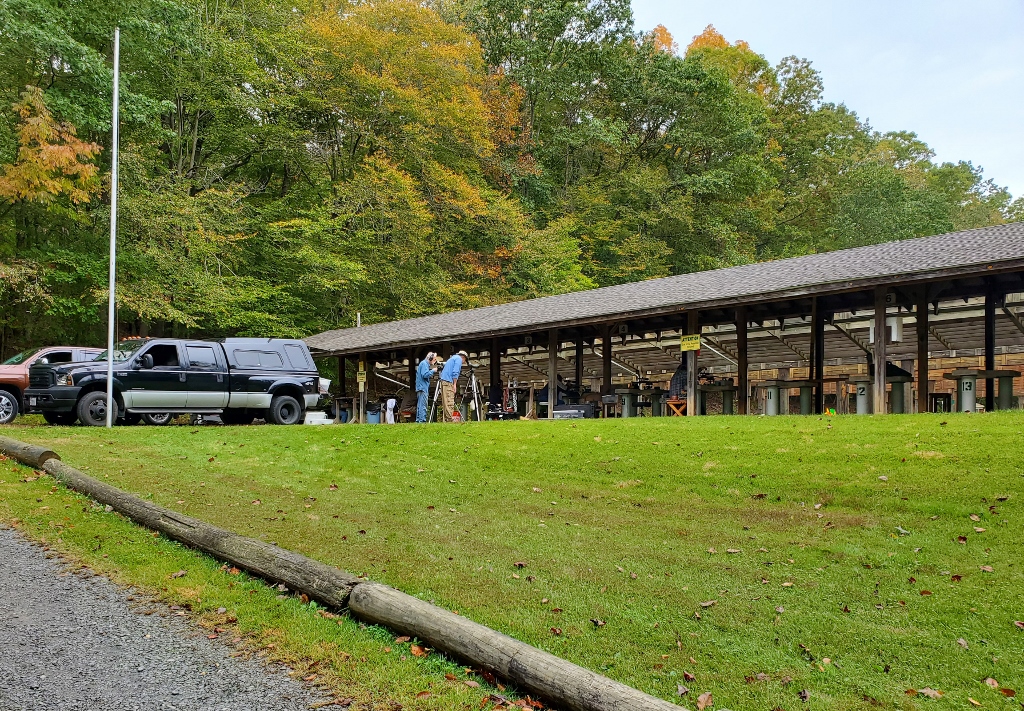 -Lee www.singleactions.com"Chasing perfection five shots at a time" |
|
|
|
Post by bradshaw on Oct 14, 2020 4:43:42 GMT -5
When I talk to Lee I don’t worry about his head swelling. I see a marksman whose long hours on the drive become a meditation on the Firing Line. Part of this meditation leaves the ego behind, just jumps off the ship for the satisfaction of reaching shore under your own steam. The most sublime performance comes when you’re not aware of it. The scoreboard doesn’t exist. The air for each shot is as pure and sweet and silent as standing in the eye of a hurricane. There is no other taste and no taste like it. Any slight glitch feels like you just derailed the trail even when you make the shot. Perhaps I should have said all along this breathing is as rich & silent as standing in the eye of a hurricane.
David Bradshaw
|
|
|
|
Post by Lee Martin on Oct 21, 2020 11:05:18 GMT -5
|
|
|
|
Post by Lee Martin on Oct 22, 2020 19:14:07 GMT -5
Match #103 Mid Carolina Gun Club, Orangeburg, SC IBS 200 & 300 Yard Nationals _________________________________________________ Both IBS score Nationals were held in Orangeburg, SC this year. Forty-two guns showed up for the 200/300, which isn’t bad considering COVID. Mid Carolina Gun Club again lived up to its reputation as one of the toughest ranges on the circuit. The wind never stops changing direction and the mirage is at times unmanageable. We shot 200 yards Saturday through 10 – 15 mph wind with gusts way over 20. It was intense air and it switched constantly. You couldn’t trust your sighters either. By the time you laid one down, figured the POA, and came back to the record, the flags flipped. By the last frame, the mirage was so bad it was tough seeing the bullet holes. Sunday gave us a bit less wind but way more mirage for the 300. We started at 48 degrees in the morning and by noon it was high 60’s. Bullets were bent in typical Orangeburg fashion. Straight across in either direction, and to a degree greater than the flags would suggest. I stayed clean on the warm-up and record targets #1 and #2. On target #3, I dropped a point but not by much. After 3, I was in 6th place. Then the mirage crept in and the wind picked up. Holds that worked on the warm-up and 1-3, weren’t working anymore. The wind was predominately left to right on #4 with lots of push. Sighter shots told me to hold in the 7 ring at 9:00. Risky, because if the wind let up or switched, it’ll hang out way left. With time ticking down, I trusted the gun. In spite of a 3” hold off at 9:00, the bullet printed 2” right of the mothball in the 8 ring. That’s 5” of ‘bend’ over flags which seemed to calm for a moment. I wasn’t alone. There were quite a few “what the hell moved it that far out?” down the line. Then came target #5. I set my gun up after bench rotation and looked through the scope. As I feared, the rings weren't discernable. I sent 3 or 4 into the sighter box and couldn’t see the holes at all. I’ve shot bad mirage before, but not like this. My only option was to guess POA relative to the flags. I, like many others on target 5, dropped a few points. Matches like these make me think about the keyboard shooters whose guns group in the 1’s all the time. They either work in a tunnel or found a place on earth void of wind and mirage. I finished 16th on the weekend and took home another top 20 patch. Flag setting Friday afternoon. Photo #1 – view from the bench. Photo #2 – view from the 100 meter target line  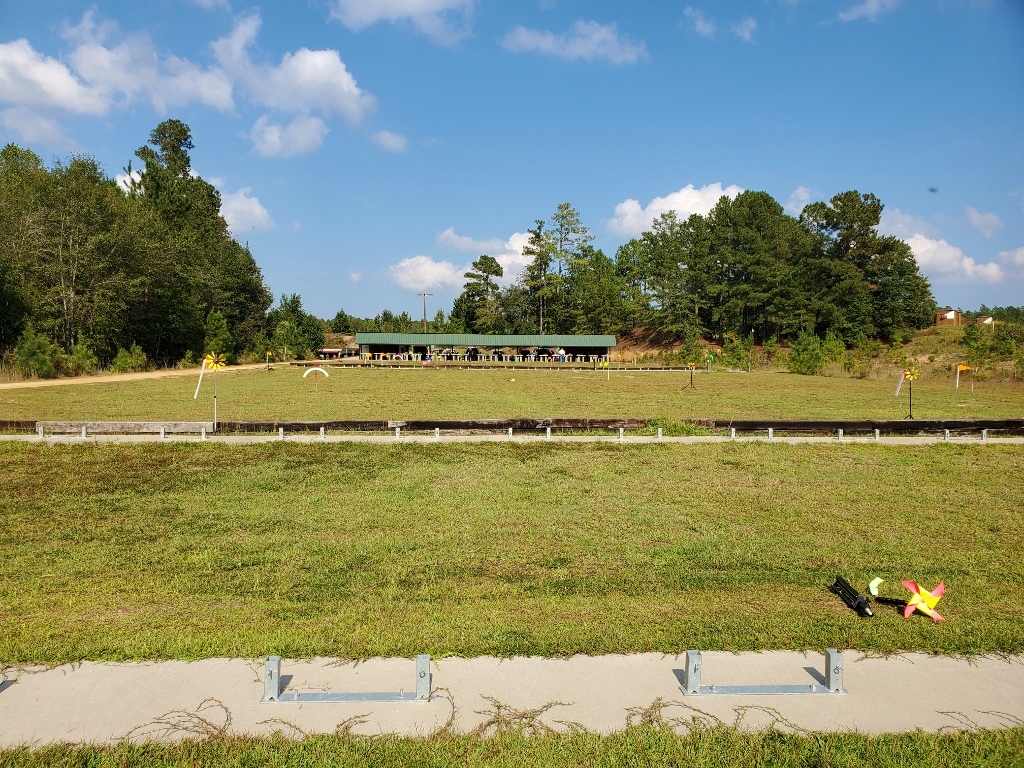    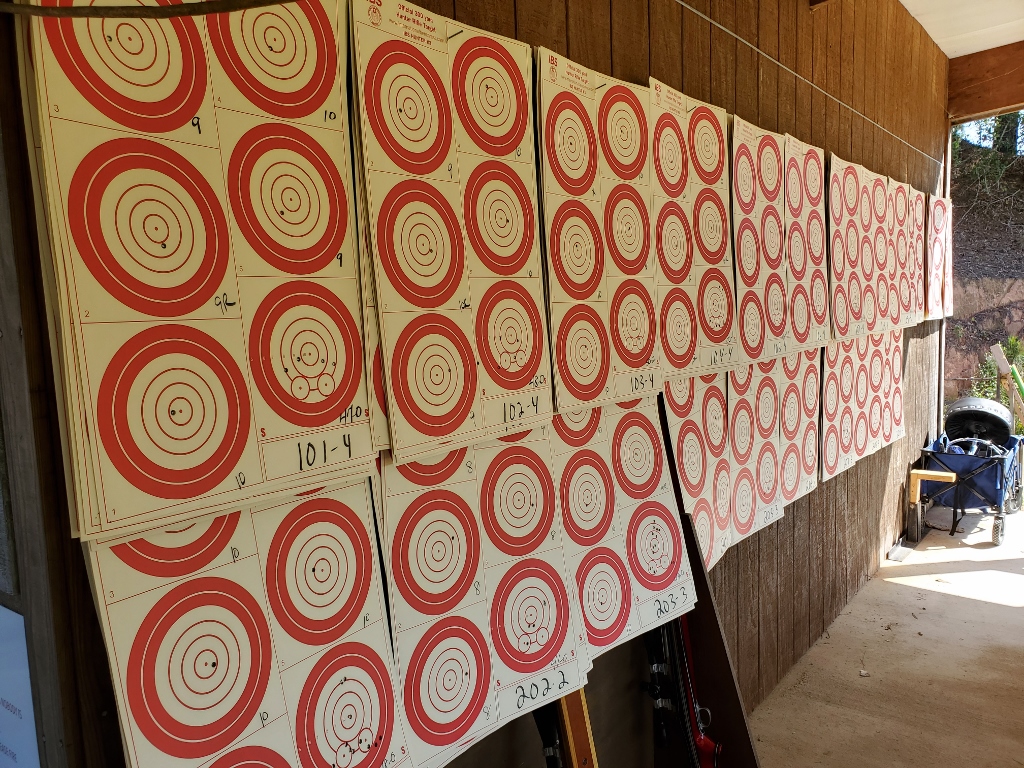 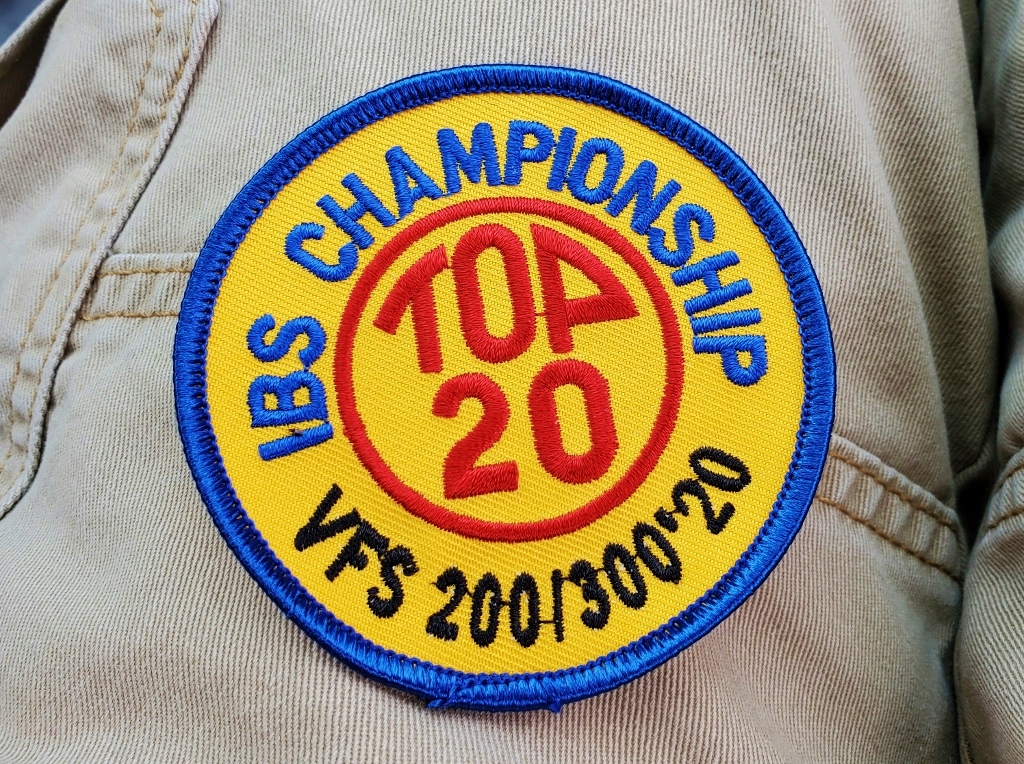 -Lee www.singleactions.com"Chasing perfection five shots at a time" |
|
|
|
Post by bradshaw on Oct 22, 2020 21:52:56 GMT -5
Lee.... brutal conditions clearly described make good reading. A hell of a lot easier to read your description than try to read that hieroglyphic wind! 5-inch drift with your little rocket? Can’t scope your bullet holes through the mirage? That’s some tough shooting, and damn good.
David Bradshaw
|
|
|
|
Post by sportster on Oct 25, 2020 19:45:28 GMT -5
I am guessing that the bottom right target on each of those groups posted is the sighter target?
|
|
|
|
Post by Lee Martin on Oct 28, 2020 8:31:51 GMT -5
I am guessing that the bottom right target on each of those groups posted is the sighter target? Yes, the lower right bull is the sighter box. -Lee www.singleactions.com"Chasing perfection five shots at a time" |
|
|
|
Post by Lee Martin on Oct 29, 2020 19:16:21 GMT -5
Match #104 Cavalier Gun Club, Montpelier, VA Global Benchrest Association – 600 yards ___________________________________________________________ Last weekend I got a chance to shoot a 600 yard event. I’ve never competed at that distance but have been eager to try the format. The Global Benchrest Association (GBA), in its second year of existence, sanctioned the match. In spite of heavy rain, the turnout was solid. I don’t own a 600 yard rig, but a good friend let me use his in the heavy class. 600 yard benchrest has two categories, defined by the gun’s weight. Light gun is capped at 17 lbs, whereas the heavy is unlimited. It is common to shoot light in both classes, even though in heavy you may be going against 50+ lb rifles and barrel blocks. The layout of a GBA 600 yard match: • Targets are scored for both group and cumulative score. Like traditional score targets, there are scoring rings, with “10” being the smallest. The 10 also contains a “X” square • The aggregate is made up of 4 targets. • Results are tallied for group, score, and combined agg • You shoot two targets back-to-back. The first relay begins with a 6 minute sighter period. At Cavalier, sighter shots are taken on a piece of plate steel hung below the target frame. Two 1” circles are spray painted on the plate for reference. Clay pigeons are also placed in the backstop between the frames. • Once the 6 minute sight-in period is over, you have 10 minutes to shoot target #1 • After target #1, there’s another 2 minute sighter period. This is immediately followed by 10 minutes for target #2. • The next time your relay is called, you have only 2 minutes for the first sight-in period, and then comes target #3. Once complete, there’s one last 2 minute sighter period, then 10 minutes for target #4. Again, I’ve never competed at 600 yards. Nor had I ever shot my friend’s rifle. When we set-up the bench, two things jumped out at me. One, I’m not used to joystick rests but thought this was a good chance to give them another whirl (I do own a Farley but never took to it). Second, my friend is a right-handed shooter. I’m a lefty. Because I didn’t want to inconvenience him by moving the rest and bags all day between light and heavy, I decided to shoot right handed. It felt odd. One thing I couldn’t use for an excuse was his equipment. The rifle is a 6mm BRA on a BAT Model B action. The barrel is indexed, the trigger has been thoroughly timed to the bolt, and the scope is a Nightforce 15 x 55. Moreover, my friend is extremely meticulous when it comes to reloading. Bullets are sorted, powder charges are weighed within 0.02 grs, and every case is measured base-to-ogive. He prefers Berger’s 103 gr ELD and 4895 powder. As for the match itself, it couldn’t have run smoother. The only downside was the weather. I was on target crew after shooting in the heavy class. With a steady downpour, I was fighting muddy shoes and wet clothing. But I had a great time and to my surprise finished towards the top in heavy gun. I took 2nd place in score, 4th place in group, and 3rd overall. Dark skies and heavy rain:  My friend’s 6mm BRA.  6mm BRA. This is simply a 6mm BR with a 40-degree Ackley shoulder.  The targets. Note the plate steel beneath each frame. 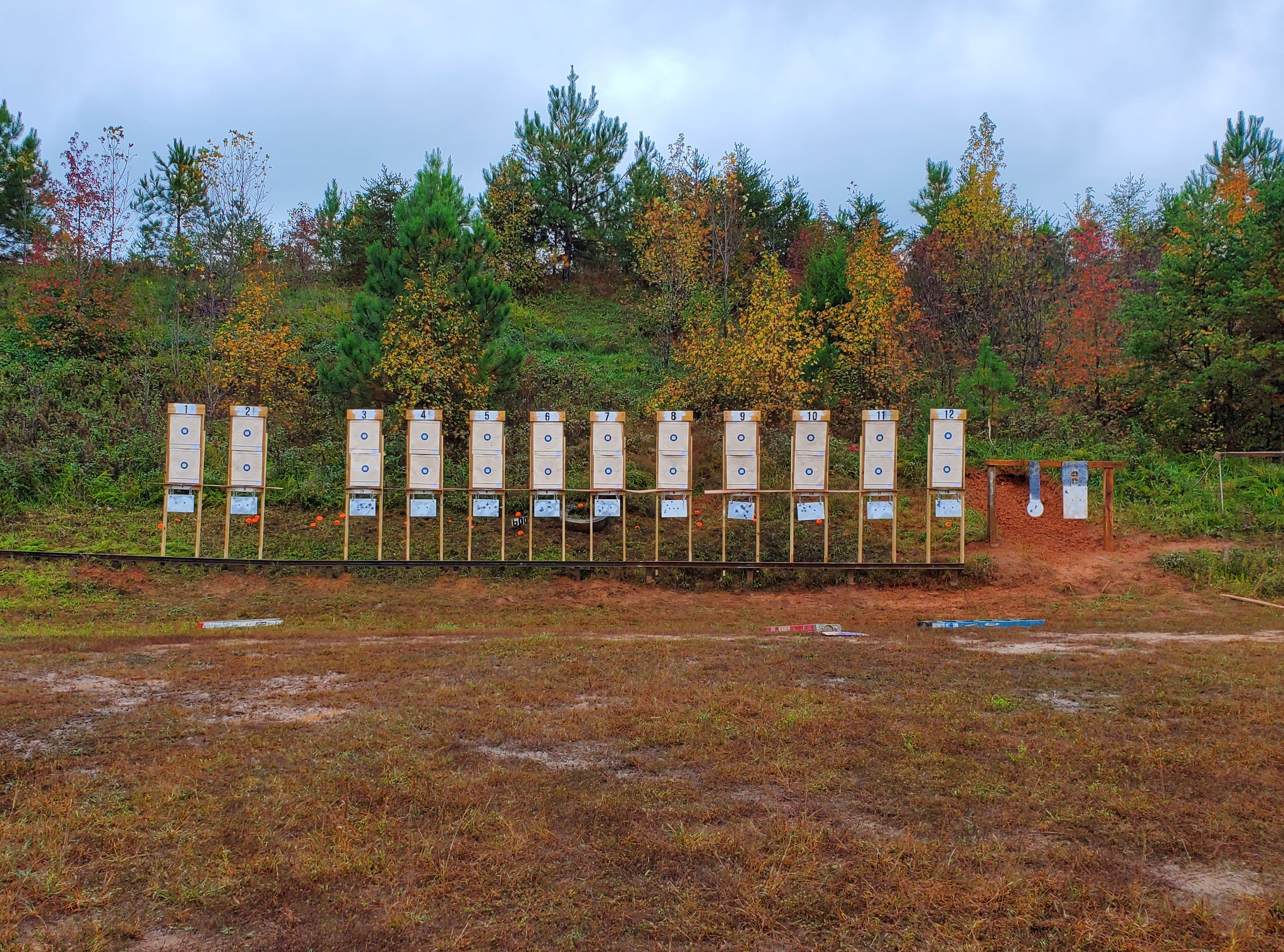  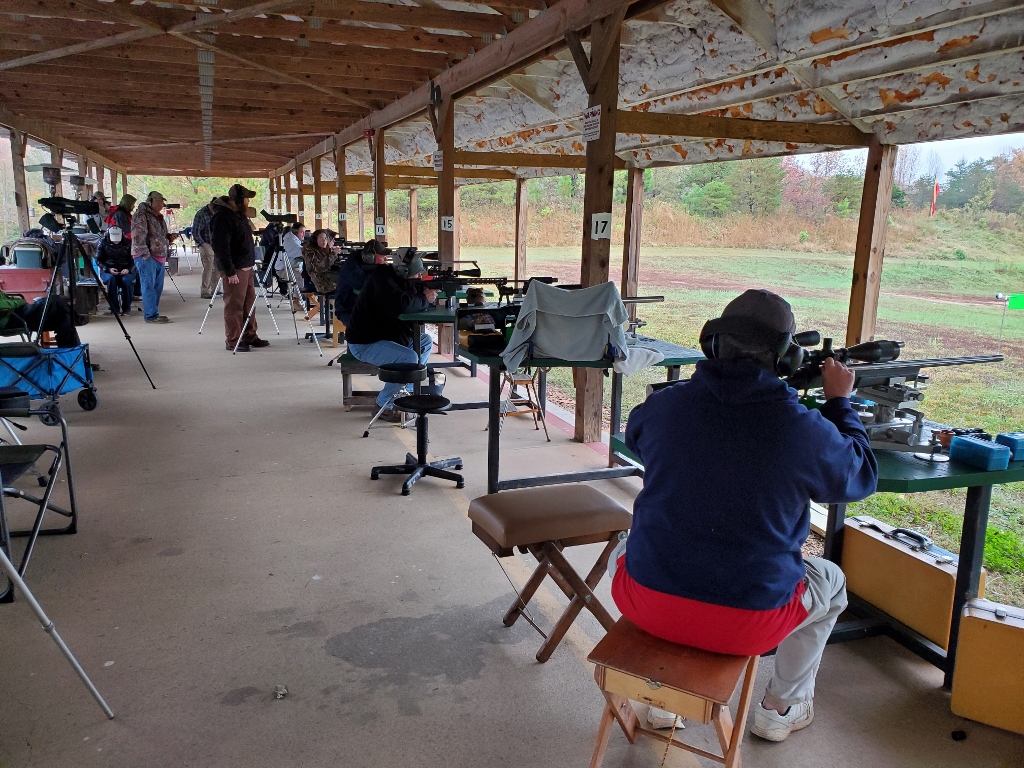 -Lee www.singleactions.com"Chasing perfection five shots at a time" |
|
cmillard
.375 Atomic
   MOLON LABE
MOLON LABE
Posts: 1,989
|
Post by cmillard on Oct 30, 2020 4:01:45 GMT -5
You did it! I was hoping you would get into the 600+ yard game!!
|
|
|
|
Post by flyingzebra on Oct 31, 2020 15:25:03 GMT -5
Excellent!
That sounds like a great day
|
|
|
|
Post by Lee Martin on Nov 5, 2020 19:57:34 GMT -5
PPC Powders - Thunderbird T32 _________________________________________________________ Benchrest shooters treasure good lots of powder. And the powders we use in the PPC have quite a history. When Lou Palmisano and Ferris Pindell designed the 22 and 6mm PPCs in the mid-1970s, bullet weight was almost a forgone conclusion. The consensus was a 60 – 70 pill, stemming from the 6x47 competitive years. Powder selection was by trial and error. Medium burn rates at near 100% density were two requisites. WW748, 4895, and 4198 landed as phase one propellants in testing. These shot well and in the older Sako brass reached 2,800 – 3,100 with a 70 grain flat-base. Lou believed 748 was a tad fast however. In hot weather it spiked pressure in a matter of 0.3 – 0.5 grains. 4895 and 748 struggled to reach 3,000 fps, but shot consistent. H322 was also tried and seemed ideal. One could fill the case, even compressing loads, and it metered beautifully. H322 gave 3,000 fps over many ambient conditions. The 6 PPC has a rich connection to military surplus powders. Hodgdon’s original 322 was in fact military surplus. In the 1960’s, the defense department floated a contract for 5.56 powder. Dupont and Olin both answered, the former with three burn rates labeled 320, 322, and 335. Olin won the deal and Dupont was left with large cashes of the 3’s. Bruce Hodgdon purchased the lots and repackaged 322 as H-322. It caught on like wildfire with benchresters, particularly in the .222 Rem, .222.5, and 6x47 (plus all the wildcats in-between). When that supply was exhausted, they turned to Nobel out of Scotland in 1975. Nobel produced 322 until they suffered a factory fire in the early 1990’s. Hodgdon then contracted with ADI of Australia to assume production. It was quality powder, but not quite as stellar as Scottish 322. It’s worth noting that Scot-Brigadier 322 exists too. Probably the most famous 6 PPC powder was Thunderbird’s T-32. Its origins are sparsely documented. The story goes like this. Around 1980/81, Thunderbird Cartridge Company out of Phoenix, Arizona acquired three 21,000 pound lots of 8208 military surplus powder (commonly used for 5.56 tracer ammunition). Thunderbird either contacted Walt Berger or he found them. Either way, the question was whether this powder had application in benchrest shooting; most notably the 6 PPC. Walt and famed BR shooter Don Geraci tested all three in the PPC and found one to work better than the others. Thunderbird and Berger labeled it T-322. Hodgdon objected to the “322” designation, so it was soon shortened to T-32. The other two lots were sold as Thunderbird 8208. T-32 has often been called a fast lot of H322, but that isn’t accurate. The 21,000 pounds sold as “T” was actually a slightly faster lot of 8208. Another myth is that all 60,000+ pounds came from pulled down 5.56. That’s false. The powder had never been loaded. To add to the confusion, Hodgdon later sold IMR 8208 surplus as GI-322. And they sold it cheap, nearly half the price of Thunderbird’s T-32 and 8208. T-32, 8208, and GI-322 worked well in the 6mm PPC for the following reasons (of the three, T-32 seemed to do the best): 1) They were relatively temperature insensitive. You didn’t have to retune as much with temp changes 2) Small granules which metered smoothly. It wasn’t hard to throw within +/- 0.1 gr. 3) Near perfect burn rate for the case volume. 100% density to slightly compressed was safe. Throughout the 80’s and 90’s, T-32 and 8208 were the most common PPC powders in competition. H-322 and Israeli made AA 2015 were also used. Then in the mid-90’s, Thunderbird sold out of T-32. The other surplus powders also dried-up. A lot of people hoarded jugs while the going was good and still shoot them to this day. But when Vihtavouri N133 came onto the scene in the 90’s, many switched. N133 is one of the tightest grouping 6 PPC fuels. However, the learning curve is steep. N133 nodes aren’t as wide as those found with T-32, 8208, and 322. The upside it’ll shoot dots if you know how to keep it in tune. Sometime around 2006, a few top BR shooters sought to revive T-32. IMR was already producing a powder which was very close to the old “T”. I believe it was made for military .308 sniper guns, but I have no way of confirming that. They released it to the public as 8208 XBR and those early lots were extremely close to T-32. Subsequent lots had a slightly slower burn rate. While XBR does OK in the 6 PPC, it falls short of the original T and N133. Enter Accurate Arms. Using a few donated jugs of Thunderbird T-32, they pretty much replicated it. Their new formula was branded LT-32. I load LT almost exclusively in my PPCs and it acts just like T-32. As with “T”, granule size is ~0.027” and it’s within 20 – 30 fps given the same charge. LT-32 also shows relative insensitivity to temperature shifts. I’ve poured it in 20 to 90+ degree air and it’ll hold tune throughout....that is if the humidity stays low. Once the air gets moist, it’ll jump tune like T-32 did. Whenever working with PPCs, my Kestral weather meter is close by. Below 60% humidity and LT-32 with its wide nodes will agg. 60% to 70% humidity and you may have to adjust charge weight or seating depth. Over 70% humidity and you’re definitely tweaking the load. These aren’t casual observations. I came to this conclusion after hundreds of targets and thorough note taking. That’s probably why LT-32 is more often found in match reports throughout the southwest. In humid regions, N133 dominates equipment lists. Accurate Arms later thinned the retardant coating on LT-32 and made LT-30. It’s near H4198 burn rate. Naturally, Accurate Arms marketed it to the .30 BR crowd. Yet LT-30 has also found footing in the 6 PPC. I’ve tested it and like the results. Being faster than LT-32 and N133, you can’t fill the case. Over-pressure happens quick with only a few extra tenths. Tread lightly at the upper node. What works in cool air may be dicey in hot weather. A real bastard concoction is LT-31. Basically equal parts of LT-30 & LT-32 mixed. I have no interest in it, but more than a few claim it gives the best of both powders (stability across a wide range of temperatures and humidity). 8 lb jug of Thunderbird T-32 shipped back in 1990:  Scottish made H-322 from the late 1980’s:  8208 XBR and LT-32:  We think a lot about powder in competitive benchrest. Some may even call it borderline obsession. -Lee www.singleactions.com"Chasing perfection five shots at a time" |
|
|
|
Post by bradshaw on Nov 5, 2020 21:16:28 GMT -5
"I came to this conclusion after hundreds of targets and thorough note taking.”
----Lee Martin
*****
Fabulous document. Building experience, constructing marksmanship. The life of Bench Rest as seen through the rifle.
David Bradshaw
|
|
|
|
Post by Lee Martin on Nov 11, 2020 20:45:15 GMT -5
Match #105 Black Creek Gun Club, Mechanicsville, VA IBS 100 Yard VFS _________________________________________________________________________ For the second straight 100 yard event, I came close to a perfect 25X. This is the fourth time I’ve shot 250-24X. And it’s uncanny how similar those matches have been. Each saw 5X’s in warm-up with the dropped X occurring early; the misses are always 10:00 inside the mothball, just a few hundredths away from the dot. Conditions at Black Creek were mixed. The wind was light, but temperatures rose from high 40’s at 8 AM to near 70 by noon. That caused a lot of mirage. Not enough to move the reticle off the 10-ring, but enough to make holding around the dot hard. My POAs were simple. For mild right-to-left, I put my March scope’s 3/32” dot at 4:00 against the X. Mild left-to-right and I did the same at 10:00. If the flag tails were flickering 6:00, I center held and ran quick. Any doubts around pulling the Brux barrel in April and going back to Kreiger are gone. The new Kreiger has averaged 22X’s at 100 yards, winning 4 times. With 600 rounds down the bore, I won't jinx the damn thing by calling it a hummer. But it stands out for two reasons: 1) Optimal tune is identical to my first two Kreiger 1:18's. The low node is 33.0 grs of LT-30 seated jam-10 thou. The upper node is 34.0 jam-10 thou. That says a lot about their consistency, and 2) My holds-offs are a tad less with this barrel than the first two Kreigers or my back-up Stingray's Lederer. Perhaps the bullet goes to sleep faster (less yaw) with #3. Either way, it gets through the wind better.   When you shoot a screamer score, the IBS provides a nice letter and decal. Last Saturday was my 7th screamer award. Here’s a photo of the one I got for my 250-24X at Fairfax last month: 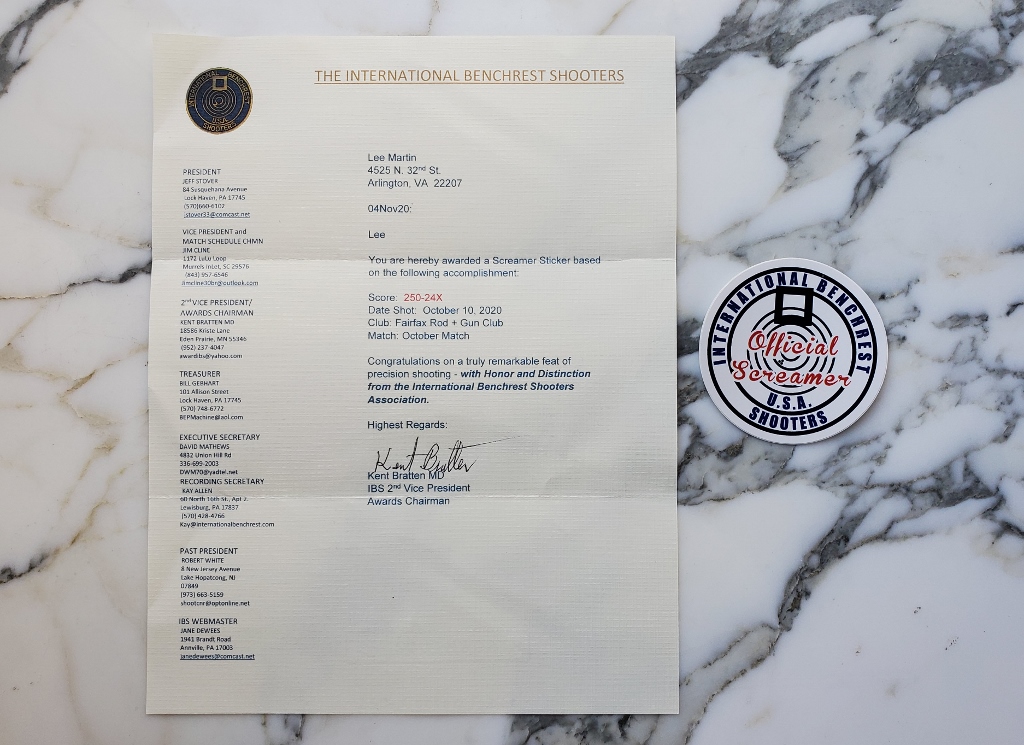 -Lee www.singleactions.com"Chasing perfection five shots at a time" |
|